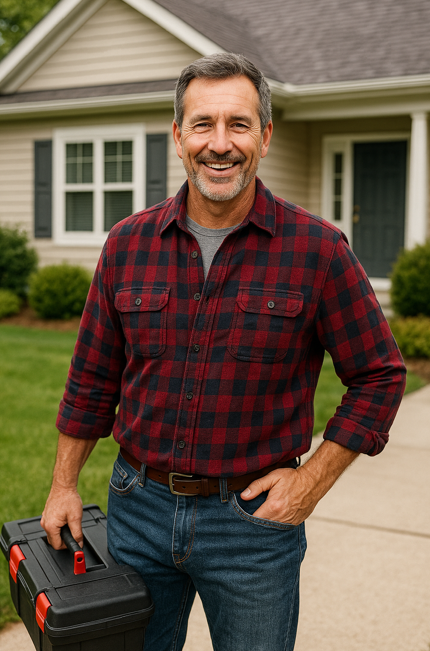🔍 What’s the Deal With R-32 and “Mild Flammability”?
Alright, let’s address the in the room. R-32 is classified as an A2L refrigerant, meaning it’s got low toxicity and mild flammability. That might sound scary at first—but don’t panic. It’s all about proper handling, which starts with trained pros and the right install setup.
According to the Air Conditioning, Heating, and Refrigeration Institute (AHRI), A2L refrigerants like R-32 have undergone extensive safety testing and are approved for residential use under modern building codes. They don’t ignite easily—you’d need a specific air-to-fuel ratio, an open flame, and the right conditions.
So unless you're lighting matches near a leaking coil (don’t do that), you’re fine.
🔒 How Safe Is R‑32 Really?
Let’s talk real-world safety.
-
R-32 has a higher ignition temperature than R-410A (over 1328°F, per Daikin’s Technical Manual).
-
Lower refrigerant charge is required to achieve the same cooling, meaning there’s less of it in your system to begin with.
-
It doesn’t break down into dangerous byproducts when it leaks—no phosgene gas or anything nasty like that.
Plus, ASHRAE standards 15 and 34 dictate exactly how A2Ls like R-32 must be handled. That includes minimum room sizes, leak detection protocols, and ventilation requirements. Systems are tested and certified based on these.
Just make sure your installer is EPA 608-certified and trained to work with A2Ls. Most major manufacturers (like Goodman and Daikin) already provide A2L-compatible install guidelines and training programs.
🧯 Building Code Compliance: What You Need to Know
Regulations around refrigerants are changing fast—especially since the U.S. EPA began enforcing HFC reductions under the AIM Act.
Here’s what that means for your home:
State and Local Building Codes
Some states (California, Colorado, Washington) have already adopted 2024 updates to the International Mechanical Code (IMC) and Uniform Mechanical Code (UMC), which now include detailed A2L installation provisions. These include:
-
Leak detection sensors for large systems
-
Mechanical ventilation in enclosed utility rooms
-
Proper refrigerant line labeling and isolation valves
If your contractor’s up to speed on the 2024 IMC, you’re in good shape. If they’re not—run.
Inspection Tips
Want to avoid headaches with permits or final inspections? Here’s what most inspectors are trained to look for with R-32 systems:
-
Clearance from ignition sources
-
Labeling that specifies A2L refrigerant use
-
Proper ventilation in equipment closets or crawl spaces
-
Accessible shut-off valves and system disconnects
And remember, if your AC tech installs without a permit, you could be left holding the bag during resales or insurance claims. Get it done right.
🧠 Smart Installers Know the Rules
If you’ve got a contractor quoting you on an R-32 system, ask them questions:
-
Are you trained for A2L refrigerants?
-
Do you follow ASHRAE 15/34 and 2024 IMC rules?
-
Will this install meet local building code approval?
The best contractors won’t just say “yes”—they’ll show you how. Some may even offer a refrigerant leak detection upgrade, which is a great idea in basements or tight mechanical rooms.
🔍 Don’t Believe the Myths
Here’s what R-32 does not do:
-
Blow up like propane
-
Cause instant health effects from a small leak
-
Void your home insurance
-
Require crazy special tools (your tech likely already has what they need)
The Environmental Investigation Agency (EIA) even supports transitioning to R-32 and other low-GWP refrigerants as part of global climate efforts. It’s safer for the environment and, with the right training, just as safe for homes.
💼 Insurance, Warranties, and R-32
Here’s the inside scoop:
-
Homeowner’s insurance typically covers HVAC regardless of refrigerant type—as long as it’s up to code and installed by a licensed contractor.
-
Manufacturer warranties (like Goodman or Daikin) do not get voided by R-32. Just register your unit after install.
-
Most utilities or government rebates require proof of proper installation, including permits and invoices.
Stick with reputable dealers like The Furnace Outlet, and you won’t run into issues.
📚 Bonus Resources to Bookmark
Want to go deeper? These resources are gold for homeowners who want the facts:
✅ Final Take from Mike
R-32 ain’t new—it’s just new here. It’s already the go-to in Japan, Australia, and parts of Europe. And with the U.S. getting serious about HVAC emissions, it’s time we got on board.
Just make sure your contractor is trained, your permits are pulled, and your install’s by the book. With that, you’ll be sitting pretty with a safe, efficient, future-proof setup.
🧰Until next time—stay safe, stay cool, and don’t skimp on the install. - Mike🧰







